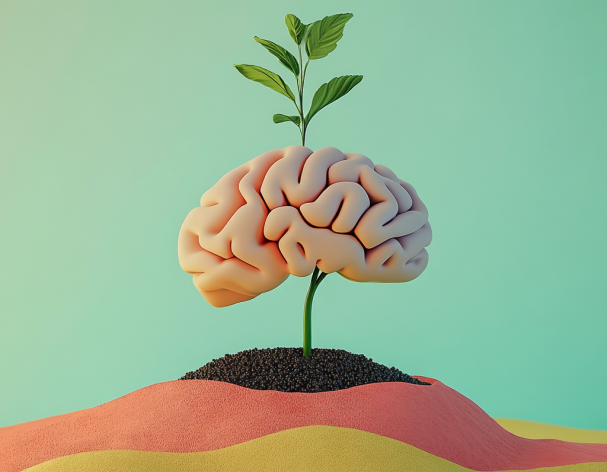In today’s fast-paced and ever-evolving business environment, the ability to adapt, learn, and innovate is crucial. Companies that thrive are those where employees continually seek to improve their skills, embrace challenges, and view failures as opportunities for growth. This mentality is what’s known as a growth mindset—a concept pioneered by psychologist Carol Dweck. A growth mindset is the belief that abilities and intelligence can be developed through dedication, effort, and learning. In an organisational context, fostering a growth mindset can lead to a more dynamic, resilient, and innovative workforce.
So, how can organisations cultivate this mindset? A key player in this transformation is Learning and Development (L&D). L&D initiatives can be strategically designed to encourage continuous learning, skill enhancement, and the adoption of a growth mindset across the organisation.
Understanding the Growth Mindset
Before diving into the role of L&D in fostering a growth mindset, it’s essential to understand what it entails. A growth mindset contrasts with a fixed mindset, where individuals believe that their abilities and intelligence are static and unchangeable. In a fixed mindset, people may avoid challenges, give up easily, and view effort as fruitless. Those with a growth mindset see challenges as opportunities to learn, persist through difficulties, and understand that effort is a path to mastery.
When applied to an organisation, a growth mindset encourages a culture where continuous learning is valued, and employees are motivated to take on new challenges. This culture not only benefits individual employees but also drives overall business success by fostering innovation, adaptability, and resilience.
The Role of L&D in Fostering a Growth Mindset
L&D plays a pivotal role in embedding a growth mindset within an organisation. By designing and delivering targeted learning experiences, L&D professionals can help employees develop the skills, attitudes, and behaviours that underpin a growth mindset. Here’s how:
1. Promoting Lifelong Learning
One of the core principles of a growth mindset is the belief in lifelong learning. L&D can promote this by offering a wide range of learning opportunities that encourage employees to continually develop new skills and knowledge. This could include:
-
On-Demand Learning Resources: Provide access to a library of online courses, webinars, articles, and videos that employees can access at their own pace. This empowers them to take charge of their learning journey and explore topics that interest them.
-
Learning Challenges: Introduce learning challenges or continuous development programs where employees are encouraged to set learning goals, track their progress, and share their achievements. This not only promotes a growth mindset but also fosters a sense of community and shared learning.
-
Encouraging Curiosity: L&D can encourage curiosity by creating a culture where asking questions and seeking new knowledge is celebrated. This can be achieved through initiatives like “question of the week” forums, knowledge-sharing sessions, or curiosity-driven projects.
2. Embedding Growth Mindset Principles in Training Programs
L&D can directly embed growth mindset principles into training programs. This involves designing training content that reinforces the idea that abilities can be developed and that challenges are opportunities to grow.
-
Resilience and Persistence Training: Incorporate modules that teach resilience and persistence. For example, training could focus on strategies for overcoming setbacks, managing stress, and maintaining motivation in the face of challenges.
-
Reflective Learning: Encourage reflective practices where employees regularly review their experiences, identify what they’ve learned, and consider how they can apply this learning moving forward. This reflection helps reinforce the belief that effort and learning lead to improvement.
-
Celebrating Effort Over Perfection: Design programs that reward effort, learning, and improvement rather than just outcomes. For instance, recognition programs can highlight employees who have taken on new challenges, sought out learning opportunities, or shown significant growth in their roles.
3. Creating a Safe Environment for Experimentation
A growth mindset thrives in an environment where experimentation and innovation are encouraged. L&D can contribute to creating this environment by designing initiatives that allow employees to experiment, take risks, and learn from their experiences without fear of failure.
-
Innovation Labs or Sandboxes: Establish innovation labs or sandbox environments where employees can test new ideas, experiment with different approaches, and learn from the outcomes. These controlled environments provide a safe space for creativity and risk-taking.
-
Fail-Forward Workshops: Organise workshops focused on learning from failures, where employees can share experiences, discuss what went wrong, and explore what they would do differently next time. This approach helps normalise failure as a part of the learning process.
-
Iterative Learning and Feedback: Implement iterative learning cycles where employees can try new approaches, receive feedback, and refine their strategies. This continuous loop of experimentation, feedback, and improvement is at the heart of a growth mindset.
4. Leadership Development and Role Modelling
Leaders play a crucial role in fostering a growth mindset within an organisation. L&D can support leaders in developing the skills and behaviours needed to model a growth mindset and inspire the same in their teams.
-
Growth Mindset Leadership Training: Offer leadership development programs that focus on growth mindset principles. These programs can help leaders learn how to foster a growth mindset in themselves and others, how to encourage learning and development, and how to create a culture of continuous improvement.
-
Coaching and Mentoring Programs: Establish coaching and mentoring programs where leaders can work one-on-one with employees to support their development. Leaders who model a growth mindset in these relationships can have a powerful impact on their mentees.
-
Recognition and Rewards: Encourage leaders to recognise and reward growth mindset behaviours in their teams. Whether through formal recognition programs or informal acknowledgements, highlighting growth-oriented behaviours reinforces their value within the organisation.
The Benefits of a Growth Mindset in the Workplace
Cultivating a growth mindset through L&D offers numerous benefits to both employees and the organisation as a whole. Here are some key advantages:
-
Increased Resilience: Employees with a growth mindset are more likely to persevere through challenges, setbacks, and changes, making the organisation more resilient in the face of adversity.
-
Enhanced Innovation: A growth mindset fosters an environment where creativity and innovation can flourish. Employees are more willing to take risks, experiment with new ideas, and learn from failures, leading to greater innovation and problem-solving.
-
Improved Performance: When employees believe they can develop their skills and improve their performance, they are more motivated to put in the effort required to achieve their goals. This leads to higher levels of productivity and job satisfaction.
-
Stronger Collaboration: A growth mindset encourages a collaborative approach to learning and development. Employees are more likely to share knowledge, seek feedback, and work together to achieve shared objectives.
-
Attracting and Retaining Talent: Organisations that promote a growth mindset are more attractive to top talent. Employees are drawn to environments where they can learn, grow, and advance in their careers, making it easier to attract and retain high-performing individuals.
Making the Shift: Practical Steps to Foster a Growth Mindset
Fostering a growth mindset within an organisation is a journey that requires commitment and intentionality. Here are some practical steps to get started:
-
Assess Your Current Culture: Begin by assessing your organisation’s current mindset. Are employees encouraged to take risks and learn from failures, or is there a culture of perfectionism and fear of failure? Understanding where you are now will help you identify areas for improvement.
-
Communicate the Value of a Growth Mindset: Clearly communicate the importance of a growth mindset to all employees. Help them understand how adopting this mindset benefits both their personal development and the organisation’s success.
-
Integrate Growth Mindset Principles into L&D: As discussed, embed growth mindset principles into your L&D programs, training content, and leadership development initiatives. Ensure that these principles are reflected in all aspects of learning and development.
-
Model Growth Mindset Behaviours: Encourage leaders and managers to model growth mindset behaviours in their interactions with employees. When leaders demonstrate a commitment to learning, resilience, and continuous improvement, it sets the tone for the rest of the organisation.
-
Create Opportunities for Growth: Provide employees with regular opportunities to learn, develop new skills, and take on new challenges. Whether through formal training programs, stretch assignments, or cross-functional projects, these opportunities help reinforce the value of continuous growth.
-
Celebrate Progress and Learning: Recognise and celebrate progress, effort, and learning within the organisation. Whether through formal recognition programs or informal acknowledgements, celebrating these behaviours reinforces their importance.
Driving Organisational Success Through a Growth Mindset
Fostering a growth mindset in your organisation is not just about individual development—it’s about driving overall success. When employees are committed to learning, open to challenges, and resilient in the face of setbacks, the organisation becomes more adaptable, innovative, and competitive.
L&D plays a crucial role in this transformation by designing and delivering programs that promote a growth mindset at every level of the organisation. By integrating growth mindset principles into your L&D strategy, you can create a culture where continuous learning is the norm, and where employees are empowered to reach their full potential.
As your organisation embraces a growth mindset, you’ll find that the benefits extend far beyond individual performance. You’ll cultivate a workforce that is not only capable of meeting today’s challenges but also prepared to drive the innovations and successes of tomorrow.



